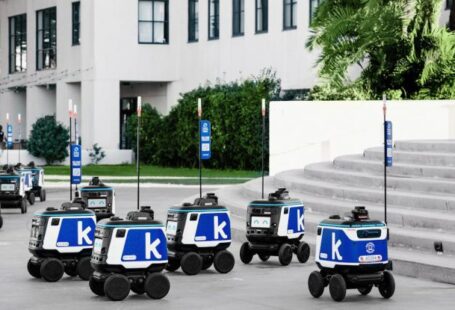Biomimetic mechanical systems are revolutionizing the field of engineering by drawing inspiration from nature to create innovative designs and technologies. By mimicking biological systems and processes, engineers are able to develop more efficient, sustainable, and versatile machines. As technology continues to evolve, new trends are emerging in the realm of biomimetic mechanical systems, pushing the boundaries of what is possible and opening up exciting possibilities for the future.
**Advancements in Soft Robotics**
One of the most exciting trends in biomimetic mechanical systems is the development of soft robotics. Traditional robotics often rely on rigid materials and structures, limiting their flexibility and adaptability. Soft robotics, on the other hand, use flexible materials that mimic the softness and elasticity of biological tissues. This allows for more natural movements and interactions, making soft robots ideal for delicate tasks such as surgery, exploration in challenging environments, and human-robot interactions. Researchers are exploring new materials and fabrication techniques to further enhance the capabilities of soft robots, paving the way for a new generation of versatile and lifelike machines.
**Bio-Inspired Sensors and Actuators**
Another emerging trend in biomimetic mechanical systems is the development of bio-inspired sensors and actuators. By studying how living organisms sense and respond to their environment, engineers are creating sensors and actuators that can mimic these capabilities. For example, researchers have developed sensors that can detect subtle changes in temperature, pressure, and chemical composition, inspired by the sensory organs of animals. Similarly, actuators based on biological principles can exhibit complex movements and responses, opening up new possibilities for applications in robotics, prosthetics, and automation. As these technologies continue to evolve, we can expect to see more sophisticated and efficient sensor and actuator systems that blur the line between living and artificial systems.
**Integration of Artificial Intelligence**
Artificial intelligence (AI) is playing an increasingly important role in the development of biomimetic mechanical systems. By combining AI algorithms with biomimetic design principles, engineers are able to create machines that can learn, adapt, and optimize their performance over time. This integration of AI allows for more autonomous and intelligent systems that can respond to changing conditions and tasks in real-time. From autonomous robots inspired by animal behavior to smart materials that can self-heal and self-repair, the possibilities are endless with AI-driven biomimetic mechanical systems.
**Energy Harvesting and Efficiency**
One of the key challenges in engineering is developing systems that are energy-efficient and sustainable. Biomimetic mechanical systems are addressing this challenge by drawing inspiration from nature’s efficient energy harvesting mechanisms. For example, researchers are developing energy harvesting technologies that mimic photosynthesis in plants, converting light into electrical energy. Similarly, biomimetic designs inspired by the efficient locomotion of animals can lead to more energy-efficient robots and vehicles. By harnessing the principles of energy efficiency found in nature, engineers are developing innovative solutions that can reduce our dependence on traditional energy sources and minimize our environmental impact.
**Future Outlook and Implications**
The future of biomimetic mechanical systems holds great promise for revolutionizing various industries, from healthcare and robotics to renewable energy and beyond. As researchers continue to push the boundaries of what is possible by drawing inspiration from nature, we can expect to see even more innovative designs and technologies emerge in the coming years. By combining advancements in materials science, robotics, AI, and energy harvesting, biomimetic mechanical systems have the potential to transform the way we live and work, creating a more sustainable and efficient future for all.





